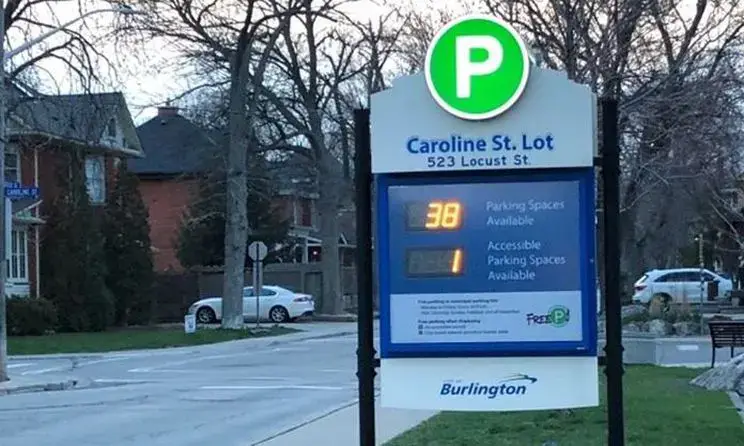Il y a quatre ans, la ville de Burlington (Ontario, Canada) a décidé de faciliter le stationnement pour ses citoyens. Ce projet a permis de surveiller plus de 450 places de stationnement sur voirie et 12 parcs relais afin de fournir des informations en temps réel sur la disponibilité dans chaque zone. C’est maintenant que Burlington a décidé de se lancer dans l’expansion du stationnement intelligent.
La ville, avec un accès direct au lac Ontario, devient la destination idéale pour les activités de loisirs. C’est pourquoi la ville a été confrontée à des problèmes de mobilité et de stationnement en raison du nombre de visiteurs.
Le système installé en 2017 par Electromega comporte des capteurs U-Spot pour mieux comprendre le comportement des conducteurs. Des capteurs U-Flow Aforo ont également été installés. En plus d’un panneau de signalisation variable indiquant le nombre de places libres dans la rue principale de la ville.
Burlington a maintenant opté pour l’expansion du projet de stationnement intelligent après son lancement réussi en 2017. Cette expansion verra l’installation de près de 650 capteurs U-Spot supplémentaires, qui viendront s’ajouter aux plus de 850 places déjà surveillées, ce qui portera le nombre total de places de stationnement équipées de capteurs à plus de 1 500.
Cette nouvelle installation permettra aux résidents et aux visiteurs de décider plus facilement où se garer lorsqu’ils se déplacent dans la ville.

Vous voulez savoir comment fonctionne le système ?
Détection avec les capteurs U-Spot carré par carré :
- Le conducteur se dirige vers un espace libre, guidé par les informations affichées sur le panneau de signalisation variable. Le capteur U-Spot détecte l’arrivée du véhicule et envoie l’information à la plateforme.
- Il recueille les données et envoie les informations actualisées au panel en indiquant un poste vacant en moins.
- Lorsque le véhicule est retiré, U-Spot ne détecte plus sa présence et envoie à nouveau des informations pour signaler que l’espace est à nouveau libre.
- Depuis U-Admin, le gestionnaire peut gérer les informations publiées, ainsi que configurer, superviser et consulter toutes les informations du système.
Détection avec les capteurs de jaugeage U-Flow :
- Le conducteur se rend dans un parking et y pénètre par une entrée clairement identifiée. Le capteur U-Flow détecte le passage du véhicule et envoie l’information à la plate-forme via le réseau de communication.
- La plateforme collecte les données et, sur la base de la capacité totale du parking, recalcule les places libres avec ce nouvel accès. Elle envoie les données actualisées aux panneaux qui indiqueront une place libre de moins.
- Lorsque le véhicule quitte la zone et passe devant le capteur U-Flow, le processus s’effectue en sens inverse. Le système indique qu’il reste une place libre dans la zone de stationnement.
- Chaque fois qu’il y a des places réservées (PMR, véhicules électriques…), elles sont surveillées par des capteurs U-Spot.
- Depuis U-Admin, le gestionnaire peut gérer les informations publiées, ainsi que configurer, superviser et consulter toutes les informations du système.
Grâce à ce système simple, la mobilité est beaucoup plus fluide, car les citoyens se rendent directement aux places de stationnement libres, évitant ainsi de tourner inutilement à la recherche d’un parking. La pollution et les émissions de CO2 sont réduites proportionnellement. Les habitants bénéficient d’une ville plus propre et plus efficace et d’une meilleure qualité de vie. En outre, l’utilisation des places de parking est optimisée grâce aux informations en temps réel sur la disponibilité.
Autres liens intéressants :
Capteur U-Spot Square-to-Square
Orientations en matière de stationnement urbain
…